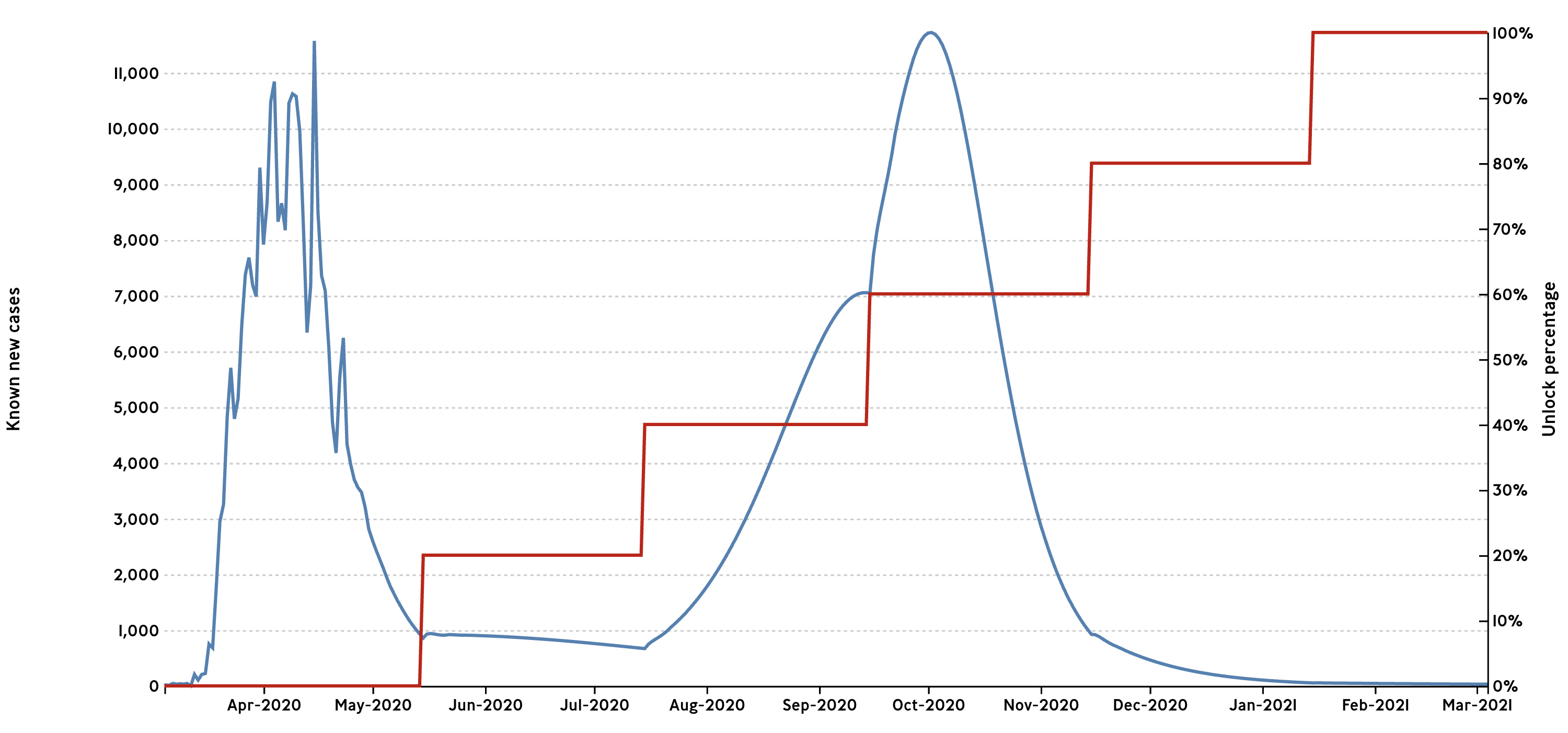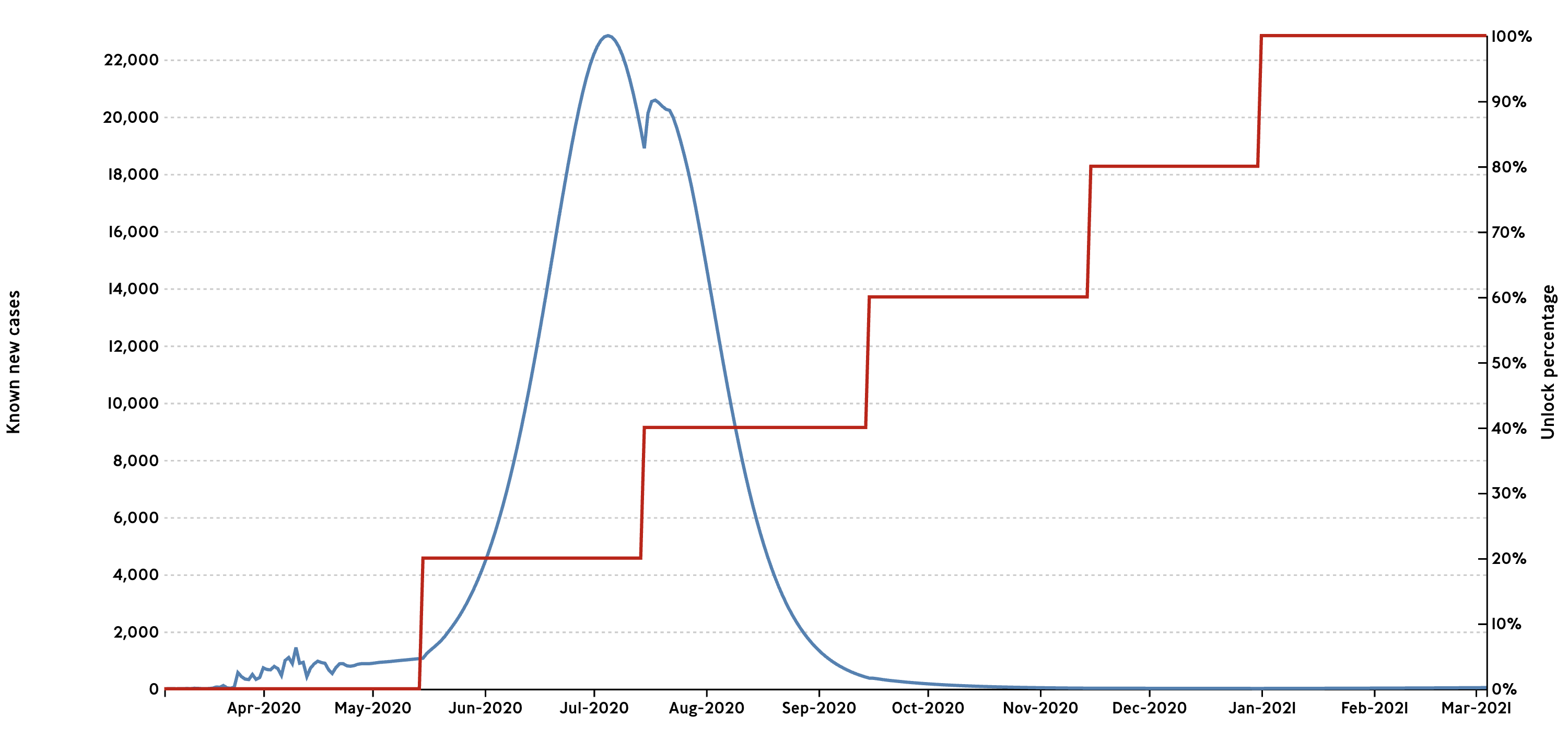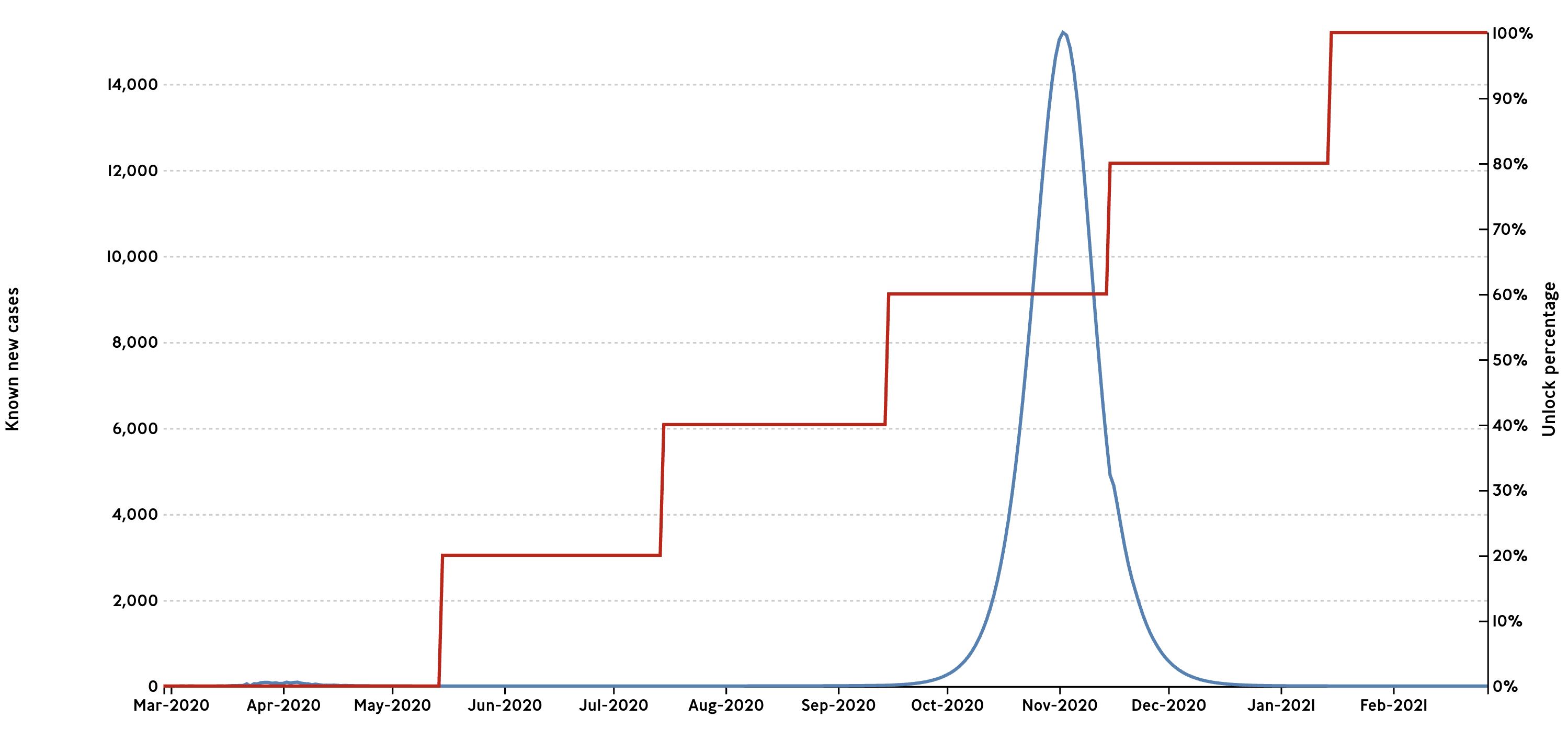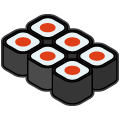This Mathematical Model Shows Us Our Grim Future in the Coronavirus World
If you are thinking that we are just going to stay home until the dust settles, this mathematical model developed by Robert Shuler can show you what happens to the dust as soon as we step outside. Here is the future of New York:
The part on the left looks noisy because Robert’s model uses the actual number of people who tested positive in New York State. The rest is smooth because it’s a mathematical projection. The red steps indicate how much we loosen our social distancing measures in percentage. I configured the model so that, beginning May 15, we expand the categories of “essential workers” by 20% every two months. According to this schedule, on January 15 of next year, we would be back to normal.
At the first step starting May 15, you see the blue line starts moving sideways. If we didn’t loosen the lockdown, the blue line would go down to zero, but it would mean that we would all have to stay home for a year until we have a vaccine.
At the second step starting July 15, you see the blue line begin to go up, and on September 15, we loosen yet again, and the blue line shoots up to the same level we just went through. This is the dreaded “second wave.”
This, by the way, is much better than the future other states are facing, because more people are infected, therefore immune, in New York than anywhere else in the US. Let’s run the model for, say, Texas. This is how it looks:
In other words, what they have experienced so far is just the tip of the iceberg; a great, big monster is still hiding on the other side of the quarantine walls.
You can run the same model for your state or country by using the interactive tool I created. Although no model is ever perfect (and it will likely evolve over the course of this crisis), Robert has tested it to make sure the results match his model—and he has had a long, distinguished career at NASA for 45 years!
Now, let’s take a look at New Zealand (because I have many friends from there), which has been applauded for its handling of the crisis so far.
Can you see the barely visible noise around April 2020? That’s what they have handled so far, but as they ease the lockdown gradually, their second wave will arrive in the Fall of this year. By the way, this is a conservative projection; I used the “case ratio” of 10 to draw this chart, which means, for every person who tests positive, there are ten others who are infected but have not been tested yet. In New York, the latest evidence supports this ratio, but in New Zealand, it’s probably more like 1 to 2. If you re-draw the chart using 2 as the case ratio, that towering second wave becomes even bigger, making the current numbers practically invisible in comparison.
The only way to avoid the second wave is to shut down the economy until the vaccine becomes available, which is a year from now. You might be thinking it’s worth keeping it shut in order to save lives, but that is a luxurious thought experiment. You might have a boring corporate job, and you’d rather stay home and get paid by your deep-pocketed employer or by the government who can print as much money as it wants, but the human race cannot survive if we all thought that way. Let’s just say we should thank God that Chinese factory workers do not think that way. If they stayed home collecting government checks, instead of making N95 masks, the whole world would be screwed.
Money cannot solve all our problems. Someone has to actually work. If we sent a million-dollar check to every human on earth to stay home, we would all die. Money does not mean anything if nobody is producing anything.
The UN is already warning us that, at the current rate, we will have “biblical” famines due to pandemic. Millions of children in developing nations will die, not from COVID-19, but from poverty. The world does not rely only on China to survive; they rely on Americans too. The starving children are not counting on Americans to stay home watching Netflix all day.
So the question shouldn’t be if we should reopen the economy, but when and how. We have to start grappling with that reality.
Subscribe
I will email you when I post a new article.





